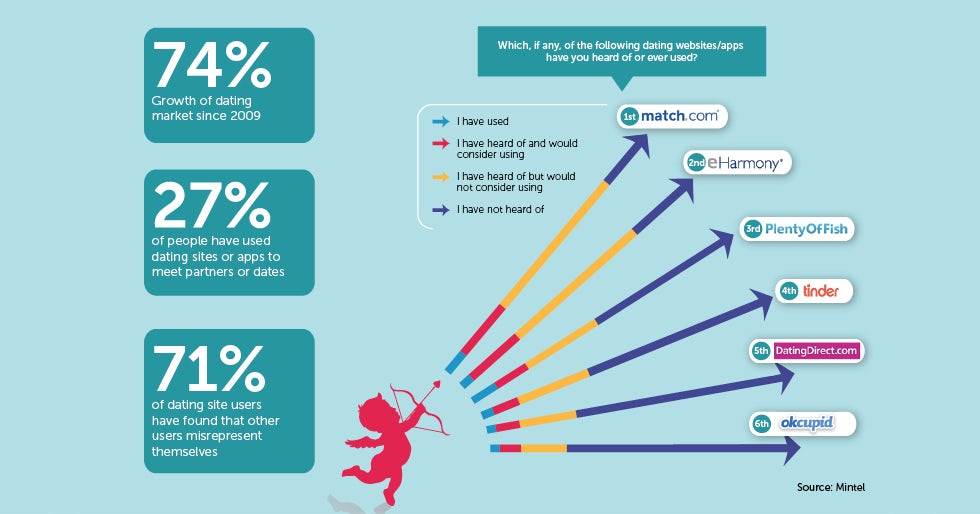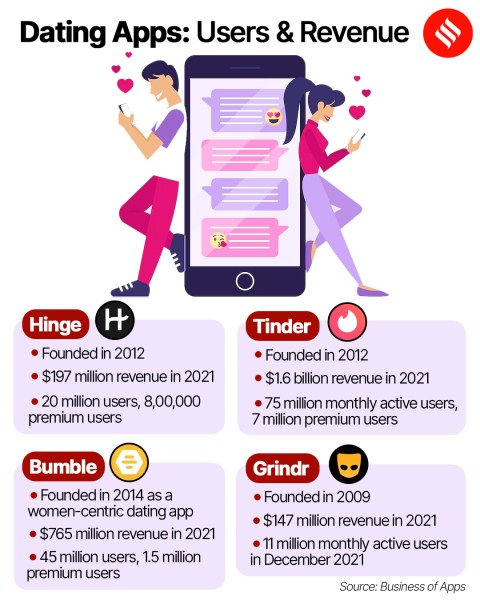
Introduction
Background of Online Dating
Online dating has rapidly transformed the landscape of romantic relationships over the last two decades. Originally, meeting a partner involved traditional methods such as blind dates, social gatherings, or chance encounters at local hotspots. But the advent of the internet has revamped this process. From the first online dating websites in the 1990s, individuals began to explore love in a digital realm, allowing people to connect beyond their social circles.
Platforms like Match.com and eHarmony pioneered this trend, offering users the ability to create detailed profiles and search for compatible matches based on various criteria. The early adopters of these sites often recounted stories of finally meeting their soulmates or finding love in unexpected ways, enriching their lives with new connections that would have been otherwise impossible.
Significance of Online Dating Platforms
The significance of online dating platforms in today’s society cannot be overstated. With smartphones and social media deeply ingrained in everyday life, online dating has become not just a trend but a staple avenue for seeking connections. Here are a few key points illustrating their importance:
- Accessibility: Online dating breaks geographical barriers, enabling individuals to connect with potential partners from diverse backgrounds.
- Variety: These platforms cater to a wide range of preferences and orientations, making it easier for users to find like-minded individuals.
- Convenience: With the busy schedules many people maintain, online dating allows users to engage with potential partners at their convenience, fitting seamlessly into their lives.
In essence, online dating has evolved into a robust ecosystem that not only offers individuals a chance to meet partners more efficiently but also shapes and reflects changing societal norms around relationships. As users embrace these platforms, they become more than just matchmakers; they are essential tools for navigating the modern landscape of romance.

Evolution of Online Dating
Early Online Dating Sites like Match.com
As online dating began to take shape in the late 20th century, platforms like Match.com emerged as pioneers in this new realm of romantic exploration. Launched in 1995, Match.com allowed users to create profiles, upload photos, and search for potential matches based on detailed criteria. For many, it was an exciting venture into the world of romance—with success stories of couples who met online proving that love could truly blossom from a computer screen.
Individuals who started their dating journey on these platforms often cherished the detailed aspect of matchmaking. They would discuss how they meticulously crafted their profiles, emphasizing unique hobbies or sharing their favorite travel destinations. This helped foster connections that were meaningful and, in many cases, lasting.
Introduction of Swiping Apps like Tinder
Fast forward to 2012, and the dating landscape changed once again with the introduction of Tinder. Here was a game-changer—an app that harnessed the simplicity of swiping to express interest (or lack thereof) with just a flick of the thumb. This innovative interface appealed to the younger generation, transforming the way people approached online dating.
Key aspects of Tinder that revolutionized online dating included:
- Instant Gratification: Users loved the quick decision-making; seeing someone’s photo and deciding in seconds whether to “like” or “pass” added an element of gamification.
- Location-Based Matching: By leveraging GPS technology, Tinder allowed users to connect with others in their immediate vicinity, amplifying the chances of meeting in real life.
Impact of Technology on Dating Experiences
The evolution of online dating wouldn’t be complete without acknowledging the profound impact of technology on dating experiences. With advancements in smartphones, connectivity, and algorithms, users now have a plethora of options at their fingertips.
- Enhanced User Experience: Various features, such as chat functions, video calls, and even virtual dates, allow users to foster relationships without the pressures of face-to-face interactions initially.
- Data-Driven Matches: Technology has ushered in sophisticated algorithms that consider user behavior and preferences, leading to more accurate and compatible matches.
As online dating continues to evolve, it paves the way for diverse and engaging experiences, reshaping how individuals connect and form romantic relationships.

Changing User Behavior
Shift from Long-form Profiles to Short Bios
As online dating platforms have evolved, so too have user behaviors and preferences. One of the most notable changes is the shift from long-form profiles to short bios. In the early days of online dating, detailed profiles were all the rage. Users invested time crafting extensive narratives about themselves, including their hobbies, interests, and relationship goals.
However, today’s fast-paced lifestyle and short attention spans have led to a preference for brevity. Many dating apps now encourage users to summarize their personalities and interests in just a few sentences or bullet points. For instance, rather than writing a lengthy essay about their love for hiking, someone might simply state:
- “Adventurous spirit 🌍 | Coffee enthusiast ☕ | Dog lover 🐾”
This new trend has made the dating process more efficient; users can quickly gauge compatibility without sifting through mountains of text. Anecdotally, some individuals have expressed that they enjoy the challenge of being succinct yet engaging in their bios, presenting their personalities with just a few carefully chosen words.
Influence of Social Media Integration
Social media has had a significant impact on how people approach online dating. Increasingly, dating apps are integrating with platforms like Instagram, Facebook, and Snapchat. This integration allows for a richer user experience where profiles can showcase snippets of one’s life through shared photos or videos.
Key influences of social media integration include:
- Authenticity: Users can create a more authentic portrayal of themselves, letting potential matches see their day-to-day lives, interests, and social circles.
- Information Overload: While this can enhance connection possibilities, it can also lead to information overload, making users question whether they are genuinely interested in a match or just attracted to their online persona.
As the lines between dating and social networking blur, individuals are finding new ways to express themselves and connect with others. In this vibrant landscape of changing behaviors, both profiles and expectations are continually adapting to meet the demands of the modern dating experience.

Advancements in Matching Algorithms
Compatibility Matching Systems
As online dating continues to evolve, so too do the algorithms that drive how users are matched. One of the key advancements in this area is the development of compatibility matching systems. These systems analyze a range of factors to suggest more fitting partners rather than relying solely on surface-level attributes.
Many platforms use personality assessments and preferences to gauge compatibility. For example, a user who values honesty and adventure may answer specific questions during the profile setup that reflect these traits. The algorithm then considers these answers when presenting potential matches.
Some platforms take this a step further by utilizing data from user interactions—like how often profiles are swiped on or messaged—to refine their compatibility measurements continuously. This approach not only improves the quality of matches but fosters deeper connections.
From personal anecdotes, many users have shared that they appreciate connections that seem “meant to be”—where they just click based on factors beyond just physical attraction.
Use of Artificial Intelligence in Matching
Artificial Intelligence (AI) has also made substantial strides in online dating, adding another layer of sophistication to matching algorithms. AI can process vast amounts of data much faster than traditional methods, allowing it to identify patterns and preferences that human analysts might miss.
Features powered by AI include:
- Predictive Analytics: AI can forecast user preferences based on past behavior, making intuitive match suggestions.
- Natural Language Processing (NLP): This technology enables dating apps to analyze user conversations to gauge interest levels and offer better match recommendations.
Many users have reported that AI-fueled features have led to more meaningful conversations. For instance, when users engage in discussions about shared interests, AI can suggest topics or prompts to help keep the dialogue flowing.
As dating platforms continue to embrace these advancements, the journey towards finding love becomes increasingly personalized and intuitive, enhancing the overall user experience in this digital age of romance.

Diversification of Dating Platforms
Niche Dating Apps Catering to Specific Interests
As online dating has expanded, we’ve seen a fascinating diversification of dating platforms. No longer are users confined to one-size-fits-all apps; instead, niche dating apps are emerging to cater to specific interests and demographics.
These specialized platforms allow individuals to connect based on shared passions, lifestyles, or unique attributes. Some popular examples include:
- FarmersOnly: Designed for agricultural folks, this platform connects rural singles who understand the farming lifestyle.
- JSwipe: A dating app for Jewish singles, helping individuals find partners who share similar cultural and religious values.
- GamerDating: Catering to the gaming community, it allows avid gamers to meet others who share their love for video games and geek culture.
Niche dating apps have their merits. By connecting people who already share specific interests, users often find it easier to start meaningful conversations. Many individuals have shared experiences where they have quickly bonded with matches over shared hobbies, making it easier to build connections right from the start.
Rise of Video Dating and Virtual Dating Experiences
In addition to niche platforms, the rise of video dating and virtual experiences has also transformed how people interact. The COVID-19 pandemic accelerated this trend, pushing many to seek connection through digital means. Platforms began integrating video calling features, allowing users to meet face-to-face from the comfort of their homes.
Key aspects of video dating include:
- Virtual Date Nights: Users can organize activities like cooking classes, movie nights, or virtual museum tours, making the experience more interactive and fun.
- Immediate Interaction: Video calls provide a more authentic experience than texting, allowing individuals to gauge chemistry and demeanor early on.
Many users appreciate the opportunity to see and hear their potential matches, which adds a layer of authenticity to online dating. Anecdotally, some individuals have found that they feel a sense of comfort and safety being in their own space while getting to know someone new.
As platforms diversify and innovate, the landscape of online dating is more vibrant than ever, catering to a variety of preferences and allowing users to explore love in ways previously unimaginable.

Future Trends in Online Dating
Virtual Reality Dating
As we look ahead into the future of online dating, one concept that is rapidly gaining traction is virtual reality (VR) dating. This innovative approach promises to revolutionize how singles interact by creating immersive experiences that mimic real-life meetings in fantastical environments.
Imagine donning a VR headset and stepping into a beautifully crafted digital café where you can enjoy a perfect cup of coffee and engage in conversation with your match. This setting allows users to experience a sense of presence that traditional dating apps seldom offer. Here are some potential benefits of virtual reality dating:
- Realistic Interactions: Users can read body language, gestural cues, and even expressions in a way that text or video calls cannot replicate.
- Creative Date Ideas: Couples can choose virtual settings ranging from serene beaches to engaging amusement parks, offering unique date experiences they might not have in real life.
While VR dating is still in its infancy, many enthusiasts are excited about the potential for deeply engaging connections that transcend geographical boundaries. Anecdotally, people have begun to explore VR platforms where they can date, and the feedback is encouraging, with users noting that it’s a fun and novel way to meet others.
Enhanced Privacy and Security Measures
As online dating continues to integrate advanced technologies, the focus on privacy and security is becoming increasingly paramount. With the rise in digital interactions, users are more aware than ever of the importance of protecting their personal information.
Modern dating apps are implementing robust measures to ensure user safety, such as:
- Two-Factor Authentication: This adds an additional layer of verification when logging in, enhancing account security.
- Profile Verification: Many platforms are beginning to roll out verification tools to confirm user identities, helping reduce catfishing and fraudulent accounts.
- Privacy Settings: Enhanced options allow users to control who sees their profiles and what information is shared.
As users become more cautious, dating platforms are recognizing the need to prioritize security features to maintain trust. Many have shared peace of mind knowing that platforms are taking steps to protect their information, allowing them to focus on the exciting possibility of finding love.
Overall, as the world of online dating evolves, the integration of virtual reality, improved safety protocols, and a commitment to user privacy will become integral components of the dating experience in the digital age.
Societal Impact of Online Dating
Impact on Traditional Dating Norms
Online dating has significantly reshaped traditional dating norms, creating a new paradigm for how people connect and form relationships. In the past, meeting someone involved more organic interactions—whether through mutual friends, social events, or chance encounters at local hangouts. However, the rise of dating apps has made it commonplace for individuals to seek companions with deliberate intent through screens.
One major change is the decreasing stigma surrounding online dating. Once thought of as a last resort or a sign of desperation, utilizing apps to find love has become a standard practice. The normalization of this trend means that many people are now open to exploring relationships with individuals they wouldn’t have met in their everyday lives.
The flexibility and convenience of online dating have also changed dating behaviors:
- Diverse Choices: Users can sift through countless profiles and find matches that better align with their values and interests.
- Controlled Interactions: Individuals can take their time getting to know someone before deciding to meet in person.
As a result of these shifts, individuals often experience a more liberated approach to dating.
Changing Attitudes Towards Online Dating
The cultural landscape of dating is also undergoing a significant transformation, as attitudes toward online dating have evolved. For many, it has morphed from a last-resort option to a convenient and effective means of connection. Anecdotes abound of couples who have successfully navigated long-term relationships after initially matching online, further showcasing the potential of these platforms.
Surveys have shown that:
- Increased Acceptance: A significant majority of younger generations view online dating positively, seeing it as a legitimate way to meet new partners.
- Mindful Engagement: Users are more focused on compatibility and shared values, leading to more intentional relationships.
While skeptics may still exist, the tide of public sentiment is clearly shifting. As people continue to seek connections in diverse and innovative ways, online dating stands as a testament to the adaptability of human relationships in the modern world. The journey to finding love has never been more multifaceted, and society embraces these changes in the realm of romantic exploration.

Conclusion
Recap of the Evolution of Online Dating
The evolution of online dating has been nothing short of remarkable, transforming from rudimentary matchmaking websites in the 1990s to sophisticated platforms with advanced algorithms and immersive experiences. Initially dominated by sites like Match.com, the landscape shifted dramatically with the introduction of swiping apps like Tinder that tapped into the fast-paced lifestyle of modern users.
Over the years, we have witnessed not just an expansion in the types of platforms available but also a significant shift in user behavior. From detailed profiles to concise bios, the emphasis has moved towards instant connection and authenticity. This evolution has created an array of niche dating apps catering to specialized interests, meeting the demands of today’s diverse population.
In just a couple of decades, online dating has shifted societal perceptions, eagerly breaking down barriers that once discouraged people from seeking romantic connections online.
Insights on the Future of Digital Dating
Looking ahead, the future of digital dating is poised for exciting innovations. Virtual reality dating may become an integral part of the online dating experience, allowing individuals to engage in more authentic interactions. As privacy and security remain paramount, users will likely see enhanced measures, creating a safer environment to explore connections.
Consider some emerging trends:
- Increased Personalization: Future platforms may incorporate even more advanced AI to tailor matches based on user preferences and behaviors.
- Sustainable Dating: A growing focus on eco-conscious living could give rise to dating apps dedicated to promoting sustainable lifestyles and values.
As technology continues to evolve, online dating will adapt, providing fresh avenues for connection and love. The journey towards romance is now more dynamic and nuanced than ever, and as society navigates these changes, the ways we connect, communicate, and relate to one another will undoubtedly continue to develop. With each new trend, online dating reinforces the idea that genuine connection can flourish in a digital world, making the quest for love an exciting adventure for everyone involved.
